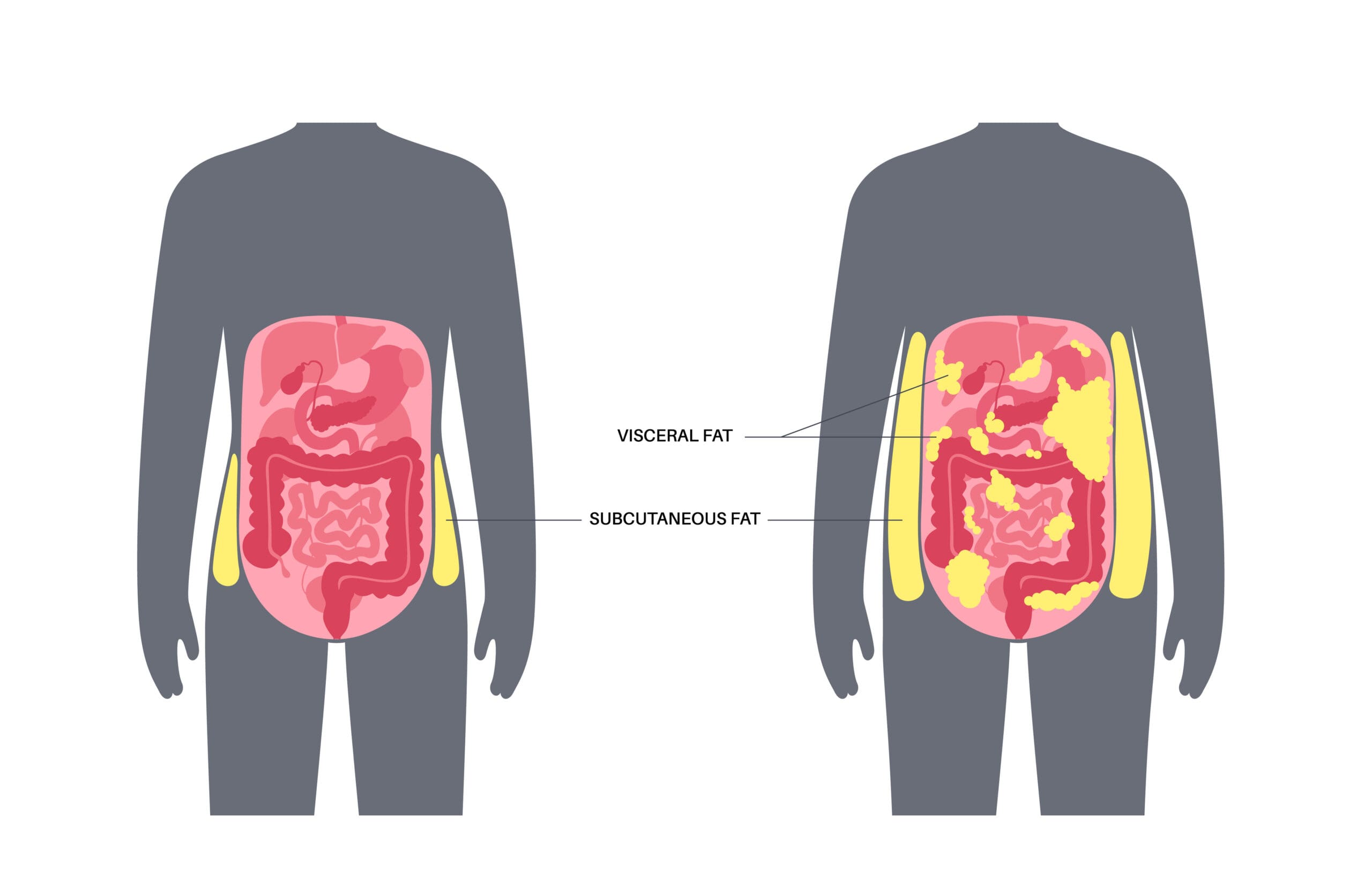Are you fat on the inside?
By naturopath Margaret Jasinska
Being overweight is bad for our health, we all know that. Being overweight increases the risk of type 2 diabetes, heart attacks, strokes, cancer and arthritis. You may not be aware that the location you store excess body fat is the main determining factor in whether you will develop one of these conditions.
Excess fat stored on your thighs, buttocks and triceps may not be pleasing to your eyes, but it does not impact your health a great deal. Fat stored on your abdomen, waist, chest and neck poses more of a problem because we have important organs and blood vessels in those parts of the body, and fat can infiltrate them.
There are two main types of fat that can accumulate on your body:
- subcutaneous adipose tissue (SCAT) and
- visceral adipose tissue (VAT)
Subcutaneous adipose tissue is the kind of fat that is stored just under your skin and it is more prevalent on the legs, buttocks and arms. People with an excess amount of this type of fat can be fat but fit. They can be overweight yet still very healthy, and not at risk of chronic diseases. A classic example of this is sumo wrestlers. They are clearly very obese, yet they are also very strong and flexible, due to their intense exercise regime, therefore they do not develop health problems. The story changes after they retire from their training schedule; at that stage they do go on to develop insulin resistance, type 2 diabetes and heart disease.
Visceral adipose tissue is strongly associated with several diseases and a shortened life span. If you carry excess weight on your abdomen, chest, back and neck, the fat there doesn’t just sit on the outside of your body. It actually gets inside and around your internal organs. People with a high level of visceral adipose tissue can develop a fatty liver, fatty pancreas and spleen; their heart can be surrounded by fat and their arteries can be clogged with fat. Fat can also grow into the throat and obstruct breathing during sleep, causing snoring and sleep apnoea.
The interesting thing is not everyone with a lot of visceral fat appears overweight. These are the types of people who have a poor diet but never gain much weight. John is a patient of mine who fits into this category. John loves food and he loves sweets. As soon as he finishes a meal or snack, he eagerly anticipates the next one. John has never been overweight; in fact he is tall and slim and that has enabled him to get away with a lifetime of bad eating habits. He loves chocolate, whole blocks of chocolate eaten in one go. He also loves biscuits, and the only way he eats them is a packet at a time.
Unfortunately, John had a major heart attack last year and discovered that most of the arteries running to his heart and brain are blocked between 50 and 90 percent. He is 63 years old and has realised that it’s time to change his diet. He is very lucky he was given a second chance.
The best way to burn fat
The best way to lose weight from any part of your body, whether it’s your thighs or your liver is to follow a low carbohydrate eating plan. Sugar, flour, bread, pasta, rice, potatoes and breakfast cereals all get converted into fat inside your liver if you eat too much of them.
Our books I Can’t Lose Weight!… And I Don’t Know Why and Diabetes Type 2: You can reverse it naturally both contain lower carbohydrate, higher protein eating plans to help you lose weight, reverse a fatty liver and bring your blood sugar down if it is elevated.
Regular exercise that makes you huff, puff and sweat is excellent for burning fat within organs and blood vessels too.
Do all these things consistently and you’ll not only look good on the outside; you’ll be healthy on the inside too.
If you would like to know more about this subject, or to make an appointment to see Margaret Jasinska, please email her margaretj@cabothealth.com.au









Leave A Comment